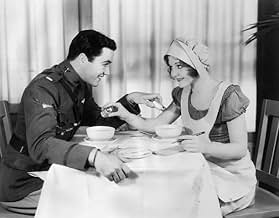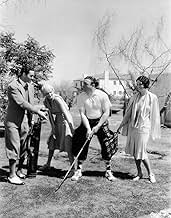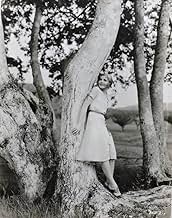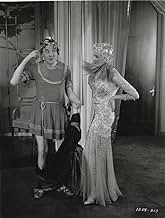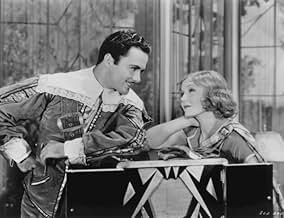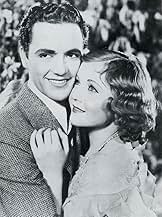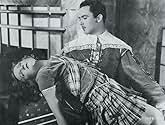Füge eine Handlung in deiner Sprache hinzuClub champion Lora Moore loses a golf match to a woman from another golf club. Then Jerry Downs, a handsome golf pro, and his goofy friend Jack Martin show up. Lora takes him on as her golf ... Alles lesenClub champion Lora Moore loses a golf match to a woman from another golf club. Then Jerry Downs, a handsome golf pro, and his goofy friend Jack Martin show up. Lora takes him on as her golf teacher to work on her putt. She falls for him, but so do several other women. Meanwhile, ... Alles lesenClub champion Lora Moore loses a golf match to a woman from another golf club. Then Jerry Downs, a handsome golf pro, and his goofy friend Jack Martin show up. Lora takes him on as her golf teacher to work on her putt. She falls for him, but so do several other women. Meanwhile, Lora's friend Angie Howard chases after Jack. A lot of silliness ensues.
- 'Dinty' Moore
- (as Don Tompkins)
- Bandleader
- (as George Olsen and His Band)
- Young Girl
- (Nicht genannt)
- Doctor
- (Nicht genannt)
- Woman in Ladies' Locker Room
- (Nicht genannt)
- Seamstress
- (Nicht genannt)
- Girl
- (Nicht genannt)
Empfohlene Bewertungen
Anyway, this is an exceptional musical from the era which is inexplicably missing from view other than museum-type showings. Why can't TCM get a hold of it? The colors are well preserved, the cast is excellent, and it does have a wonderful sense of fun and charm. It really deserves to be rediscovered, as do so many other movies from this overlooked era.
Buddy Rogers was the nominal star and looked heavily made up for some reason and didn't give one of his better performances. Nancy Carroll, on the other hand, was in her element and didn't disappoint. But the story was over the top and grew tiresome despite the short running time of 92 minutes. I appreciate comic zaniness but I felt this one ladled it on with a trowel. Tragic comedienne Thelma Todd was on hand but was largely wasted and Eugene Palette was too old for his part. To top it all off, the music was ordinary, except for the "Button Up Your Overcoat" number.
As I said, I tried. Judging from the reception it got at Capitolfest in Rome,N.Y., I must have been the only wet blanket. "Follow Thru" is a Paramount picture, which could explain its absence from the public forum, as all early Paramount films are owned by Universal and are kept under lock and key.
Sadly it is unavailable (I saw it years ago at the UCLA restoration festival, but they show it again every once in a while). If you every get a chance to see, bring your girl/boyfriend; especially if you are young, in love and a little nuts.
"Follow Thru" was Paramount Picture's second completely color film movie, and it's the earliest such surviving motion picture today viewable by the general public. Adapted from the successful (401 performances) 1929 Broadway musical of the same name, "Follow Thru" delivered an ofttimes saucy look at women's golf along with the men in those golfers' lives.
Movies shot in Technicolor and other competing companies' color film stock systems were fairly popular when musicals were introduced in the early stages of synchronized sound. The devastating toll of improper storage as well as a series of fires inside studio film warehouse facilities have erased most of those early color movies or at least large segments of them. "Follow Thru" was an anomaly in cinema where a print was preserved in a pristine state. The Technicolor used by Paramount was its third process, two strip system offered at the time. Blues and yellows were muted, but Technicolor was more focused on achieving realistic flesh tones than anything else. It would be a couple more years before Technicolor came out with the more realistic three strip process.
Capturing audio outdoors, especially the actors' dialogue, was also an extraordinary feat for Hollywood during this time. There are several noticeable sequences, especially during the golf competition, where the actors delivered their dialogue in a studio sound booth. The editors then looped, or dubbed, their voices during post-production onto the shot film strip's audio track. In other scenes, blimps, a fairly new innovation of padded sleeves wrapped around the camera to muffle its noisy motors, kept the area quiet while audio was being recorded.
"Follow Thru" focuses on a country club's best woman's golfer, Lora Moore (Nancy Carroll), who loses to her opponent at another country club. Looking to improve her game, she meets golf pro Jerry Downs (Charles "Buddy" Rogers). He teaches her a few lessons, including how to love. Jerry's friend, Jack (Jack Haley), a wacky but lovable Teddy Bear-type guy, falls for Lora's friend Angie Howard (Zelma O'Neal). Both Haley and O'Neal were in the Broadway play and marked their second film appearance in "Follow Thru." Boston born and raised Haley is known to today's viewers for his portrayal of the Tin Man in 1939's "The Wizard of Oz."
Nancy Carroll is a prime example of how a very popular and an acknowledged talented actress could sabotage her career by being difficult on the set. Carroll's musical skills on the stage resulted in receiving several movie roles at the dawn of talking pictures. From 1927 until the mid-1930s, Carroll was one of the more active actresses for Paramount. But she constantly complained at the type of characters she was forced to play, and was quite vocal to management and the directors on the movie sets about it. She was such an irritant that, despite her enormous box office appeal, Paramount released her. She received some minor parts in low budget films after that before returning to the stage.
"Follow Thru" was produced during the so-called "Pre-Code" era, where the censors took a more relaxed view of movie situations than later. The scene where voyeurs Haley and Eugene Paulette are hiding above the women's lockers in the club house dressing room would never pass the more restrictive censor board from 1934 onwards. The scene has been pointed out by many viewers as one of the highlights of the film. Says reviewer Nora Fiore, "consider the sequence where Haley and scene-stealing Eugene Pallette sneak into a locker room full of lingerie-clad ladies with the intention of retrieving a ring. After many shocking revelations for girl-shy Haley, the pair sneak out wearing ladies' clothes. And, believe me, you haven't lived until you've seen Eugene Pallette in a striped day dress."
Wusstest du schon
- WissenswertesNancy Carroll and Zelma O'Neal both had naturally red hair, and O'Neal's was dyed darker to provide more contrast between the two of them.
- PatzerWhen Effingham and Angie are standing on the bench (after spying on Lora and Jerry) a microphone shadow falls on his arm several times.
- VerbindungenFeatured in Broadway: The American Musical (2004)
- SoundtracksButton Up Your Overcoat
(uncredited)
Music by Ray Henderson
Lyrics by Lew Brown and Buddy G. DeSylva
Sung by Jack Haley and Zelma O'Neal
Top-Auswahl
Details
- Erscheinungsdatum
- Herkunftsland
- Sprache
- Auch bekannt als
- Âşıklar kulübü
- Drehorte
- Palm Springs, Kalifornien, USA(selected outdoor scenes)
- Produktionsfirma
- Weitere beteiligte Unternehmen bei IMDbPro anzeigen
- Laufzeit1 Stunde 32 Minuten
Zu dieser Seite beitragen


